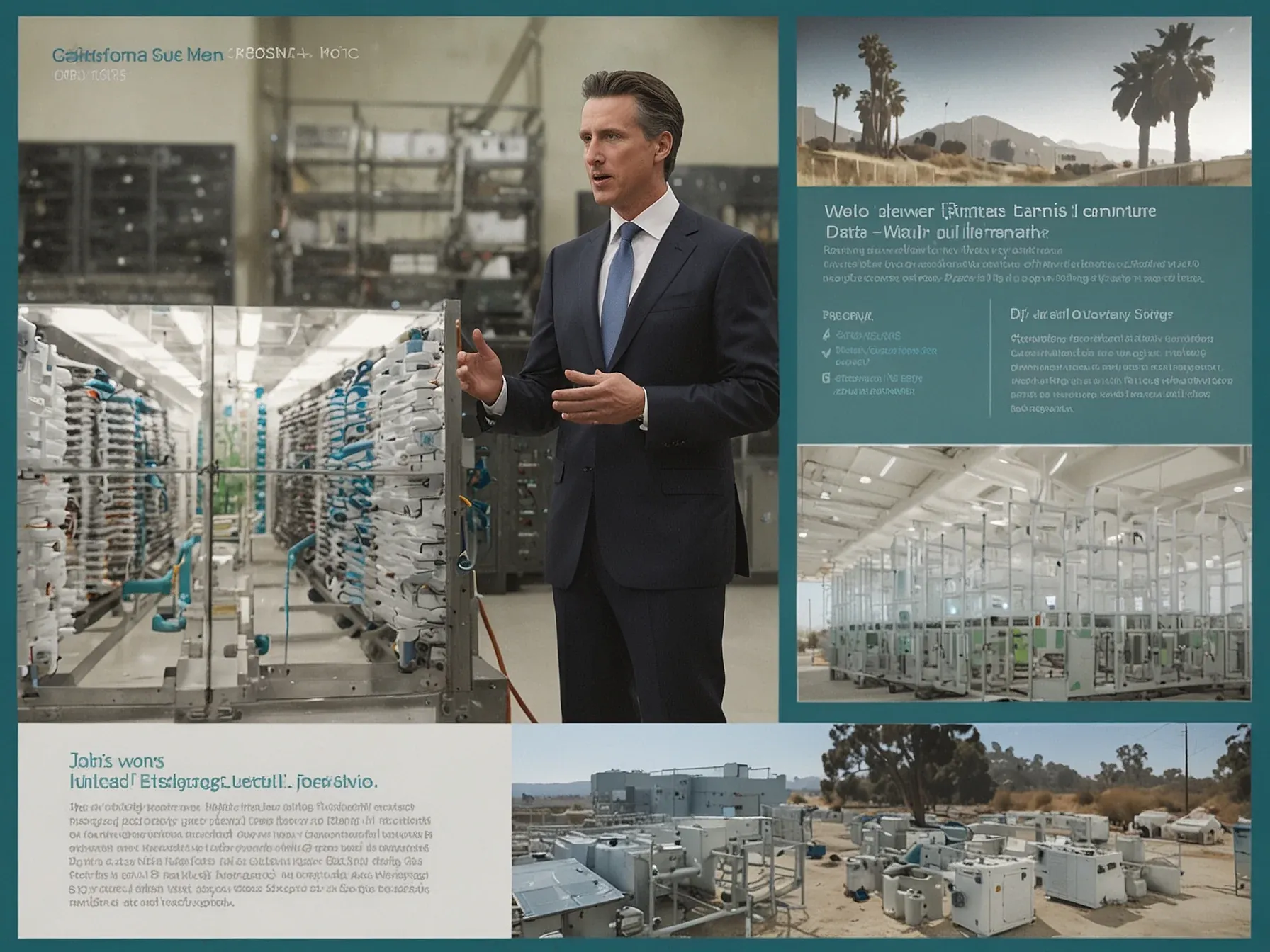
Experts advise locating new US data centers outside water‑stressed California
Experts are warning that the next wave of U.S. data‑center construction could run into a resource bottleneck if planners keep eyeing the Golden State. The region’s chronic water scarcity has already prompted analysts to flag it as a liability for power‑hungry facilities that rely on cooling towers and humidifiers.
A recent research brief, titled “If the US Has to Build Data Centers, Here’s Where They Should Go,” recommends scouting alternatives in states with more abundant supplies. The timing feels urgent: in October, Governor Gavin Newsom rejected legislation that would have forced operators to publish their water consumption figures, arguing the state is “well positioned to support the…” — a stance that underscores the policy gap surrounding transparency. As companies weigh expansion against sustainability pressures, the question becomes whether California can sustain another surge of data‑center footprints without exacerbating its long‑standing water challenges.
Conversely, California's long-running water issues may cause a problem if data centers keep expanding there. (In October, Governor Gavin Newsom vetoed a bill that would have required data center operators to disclose how much water they use, claiming that the state is "well positioned to support the development" of data centers.) Data center operators choose locations based on a variety of factors, including energy and water needs. But they're not the only inputs: Arizona, which has more than 160 data centers, is named in the analysis as one of the states facing "severe water scarcity issues." The industry has no plans to move out of some of their favored areas: There are still massive projects planned for Virginia, including a $9 billion investment from Google announced in August.
Where should the next wave of US data centers rise? Experts say outside California, where chronic water shortages could hamper expansion. Meta plans to pour $600 billion into domestic infrastructure by 2028, and OpenAI has already earmarked $1.4 trillion for similar projects.
An extensive new analysis examines the environmental footprint of these facilities, highlighting the strain on regional resources. Yet California’s long‑running water issues remain a hurdle; Governor Gavin Newsom vetoed a bill that would have forced operators to disclose water use, arguing the state is well positioned to support the industry. Without transparent metrics, assessing true impact is difficult.
Policymakers could consider incentives for regions with abundant water supplies. If states outside the West offer lower energy costs and more reliable water access, they may become attractive alternatives for firms seeking to balance performance with sustainability goals. Because the sector's growth outpaces current reporting standards, regulators may face pressure to tighten disclosure rules.
The recommendation to look elsewhere reflects both economic ambition and environmental caution. Whether companies will shift siting decisions in response to water concerns is still unclear. Stakeholders will need clearer data before large‑scale deployments proceed.
The debate continues.
Further Reading
- California could start tracking data centers' growing water footprint - Los Angeles Times
- Drained by Data: The Cumulative Impact of Data Centers on Regional Water Stress - Ceres
- Data Drain: The Land and Water Impacts of the AI Boom - Lincoln Institute of Land Policy
- What the AI Data Center Boom Means For Our Water and Climate - Food & Water Watch
Common Questions Answered
Why are experts warning that new U.S. data centers could face a resource bottleneck if built in water‑stressed California?
California’s chronic water scarcity makes it a liability for power‑hungry data centers that rely on cooling towers and humidifiers, which consume large volumes of water. Continued expansion in the state could strain already limited water supplies, hindering reliable operation and growth.
What specific action did Governor Gavin Newsom take regarding data‑center water‑use disclosure, and what reason did he give?
In October, Governor Gavin Newsom vetoed a bill that would have required data‑center operators to disclose their water consumption. He argued that California is "well positioned to support the development" of data centers, suggesting the disclosure requirement was unnecessary.
According to the research brief “If the US Has to Build Data Centers, Here’s Where They Should Go,” which regions are recommended as alternatives to California?
The brief advises scouting states with more abundant water supplies, highlighting locations such as Arizona and other western states that face fewer water‑stress challenges. These regions can provide the necessary resources for cooling without exacerbating scarcity.
How much are Meta and OpenAI planning to invest in domestic data‑center infrastructure, and why does this amplify concerns about California’s water issues?
Meta plans to invest $600 billion and OpenAI has earmarked $1.4 trillion for U.S. data‑center projects through 2028. Such massive expansion could intensify water demand in California, reinforcing experts’ call to locate new facilities outside the state’s water‑stressed areas.